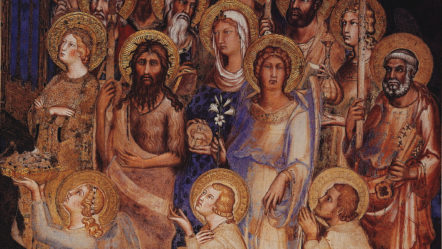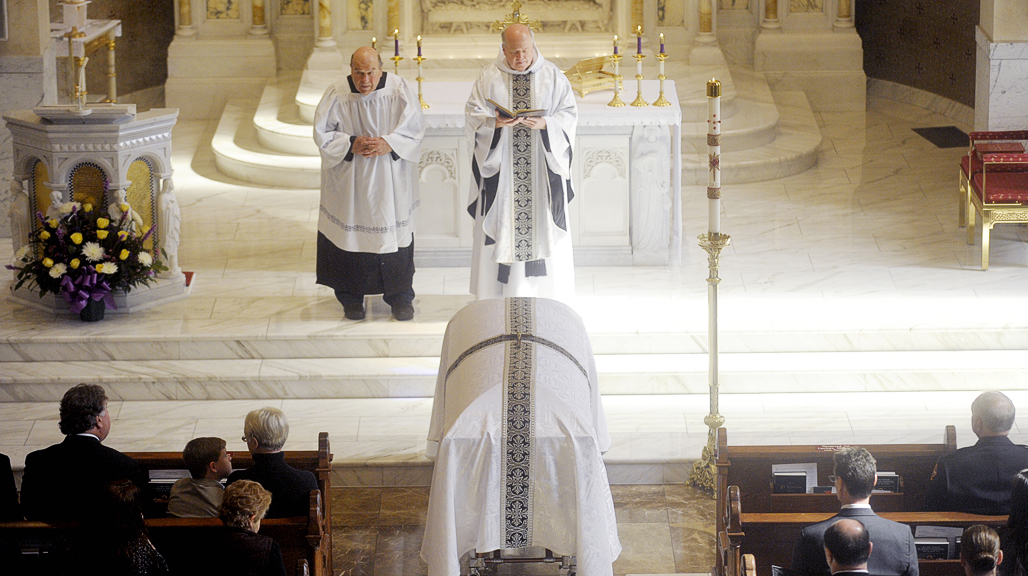In grade school the nuns taught us that our bodies were temples of the Holy Ghost. I don’t know how many really understood what the teaching meant, though it did sound really cool to most of us. I often wonder if they even teach that concept in today’s Catholic schools. It probably does work its way into talks on chastity and sex. I believe that any workshop on the late pope, St. John Paul II’s theories on the Theology of the Body would have to have some allusions to the reverence that we should pay our natural bodies.
Americans worship their bodies until they start getting old or fat. We spend billions every year taking care of them with hygiene and beauty products, gym and spa visits, painful and dangerous exercise routines, vitamins and many other ways of increasing their longevity and to many their immortality. I used to see former NFL quarterback and now host of a pregame show every Sunday, Terry Bradshaw, in a weight-loss commercial. Not any more as the former athlete resembles a Sumo wrestler.
Look at how many liberals or vegetarians lobby against polluting our bodies and those of others with cigarettes, second-hand smoke, alcohol, fatty foods, bad carbs and even red meat. We glorify our bodies in books, TV shows and photography. Now if the Church could get some of these same people to see the dire effects of pre-marital sex, pornography, drug use, reckless driving and alcohol abuse, just maybe they might be able to see beyond the flesh and understand the teachings about the human person.
The human body had been the traditional subject of art for centuries if not millennia. The nude form, male or female has often run up against censorship. This negative attitude emanated from the pagan philosopher, Plato, who helped establish the duality of man’s body and soul as a principle of Western Civilization. Once the two were separated, philosophical, ethical and moral divisions were not far behind.
The Christian religion before John Paul II had this strong sense of the body, especially the female body as being a near occasion of sin. Most Platonists and later many Christians acted as if they were uncomfortable in their own bodies, mainly because they believed the souls were made for heaven and the body for the grave.
The early Puritans had an insulting attitude toward the human body that the Bible clearly said was created in the image and likeness of God. Other philosophies and religious views, like the Jansenists, the thinking of St. Augustine and others inflicted terrible psychological damage on maturing young people. Bishop Robert Barron’s book, Thomas Aquinas: Spiritual Master, has a marvelous chapter, entitled The Human Body was made for Ecstasy.
The Bishop stated that according to Aquinas human beings should make peace with their bodies and renounce the heretical views of the Puritans and the Jansenist Catholics and their dedication to the degrading of the body and its pleasures as an evil, inimical to the will of God.
The Biblical story of Adam and Eve, with Eve as the temptress that ruined Paradise for everyone, has had a long run among moralists and millions of Catholics and Christians. Unfortunately, thanks to Freud, who emphasized the mental side effects of repressing normal urges, modern society has gone 100% the other way, mistaking libertinism, promiscuity and license for liberation and freedom.
Too many have followed philosopher David Hume who argued that reason or conscience had to become a slave to the passions. Our society treats any kind of nudity as a prelude or invitation to sex. This attitude has plagued our culture for ages. The liberals are as guilty as the conservatives in perpetuating these misanthropic and misogynistic views. John Paul taught that nudity had its correct place but counseled that in our minds the human body should be divorced from sex, except during those rightful times between husbands and wives.
I think ESPN Magazine still publishes its annual body issue. The magazine features pictures of several well-known female and male athletes, who are totally nude but look and appear like visions from the Parthenon of ancient Greece or the Roman Colliseum.
Almost ten years ago, golfer Gary Player was photographed for the magazine. The South African Player looked fantastic, at 77 years of age. The magazine said that his daily regimen included 500 sit-ups. Those who were shocked by these photos should rethink their attitude toward the human body. There is nothing suggestive or indecent about any of the photos.
The editors were careful to cleverly block out any signs of genitalia in all their subjects. In a way, this is the only dishonest thing about the issue. St. John Paul said that we are all male and female. Our distinctive sexual organs are an important part of what makes us male or female. They don’t define us as sexual objects but relate to the essence of our personhood. I find it ironic that there are those who are working feverishly to eliminate divine distinctions from our cultural consciousness.
To John Paul, pornography was showing too little. In the name of prudence and even modesty, ESPN has ironically done that. I know perfectly well why they did. To have followed the pope’s TOB would have invited condemnation and censorship and disdain from the people I described above.
I have to admit, I was raised in a cultural milieu that tried to hide any notions of sexual distinctions. Fortunately my negative attitudes have changed to the point that I see pretty women, not as an object of sex or any prurient urges, but as a beautiful example of God’s creation.
Modesty and chastity have often argued for keeping the female body totally in wraps. This idea is lacking balance. The once overly-modest West has now totally reversed itself to the extent that well into the 21st century virtually everything is there for the naked eye. This has worked to the great disadvantage of women everywhere, whose bodies are little more than commercial objects. It was these attitudes of disdain for the human body and the reduction of the person, especially the female to a sex object, that the late pontiff hoped to discourage.
I remember that one ESPN photo of a demure, blonde athlete caused quite a scandal in Poland. The Catholic church there could not handle the naked truth about tennis star Agnieszka Radwanska. Shortly after Radwanska’s tasteful and relatively modest photos appeared in 2013, Poland’s Youth Crusade severed its ties with the then fourth-ranked tennis star over her immoral behavior while the hierarchy blasted her for her semi-nude spread.
I still find this incredulous that John Paul II’s native home and a European country to boot would still hang on to these antiquated views on the human body. This has seriously contributed to the infantilization of millions of men. It is these contradictory and warring principles that rob human life of much of its daily happiness. Aquinas believed that contrary to all this, the soul was most at home in a human body.
Body and soul were made for each other. To separate them is death. They have always belonged together and their joys and pleasures will be astronomically magnified in Heaven. Barron says Aquinas also wrote that the sensible delights that come from sexual intercourse was greater in paradise than it is on earth. It is absolutely not the case, according to St. Thomas, that pleasure and carnality in their proper place are inducements to sin.
Fresh from the creative hand of God, the human being was if anything, sexier than we are at present. This is true because sin diminishes some of the sensibility of the body. Sin has also rendered the bodily passions disordered and hence less intense and less deeply satisfying. Maybe this is why there always seems to be something missing––a hunger for something more. That something more is God and the life He has promised us in Heaven, the place where our human bodies will be returned to us some day.
While the world loves to celebrate the human body, never forget that the reason we have such unique bodies is to provide an earthly home for our souls. When the two are rejoined in Heaven—hopefully–at that moment our souls can finally be at home.








